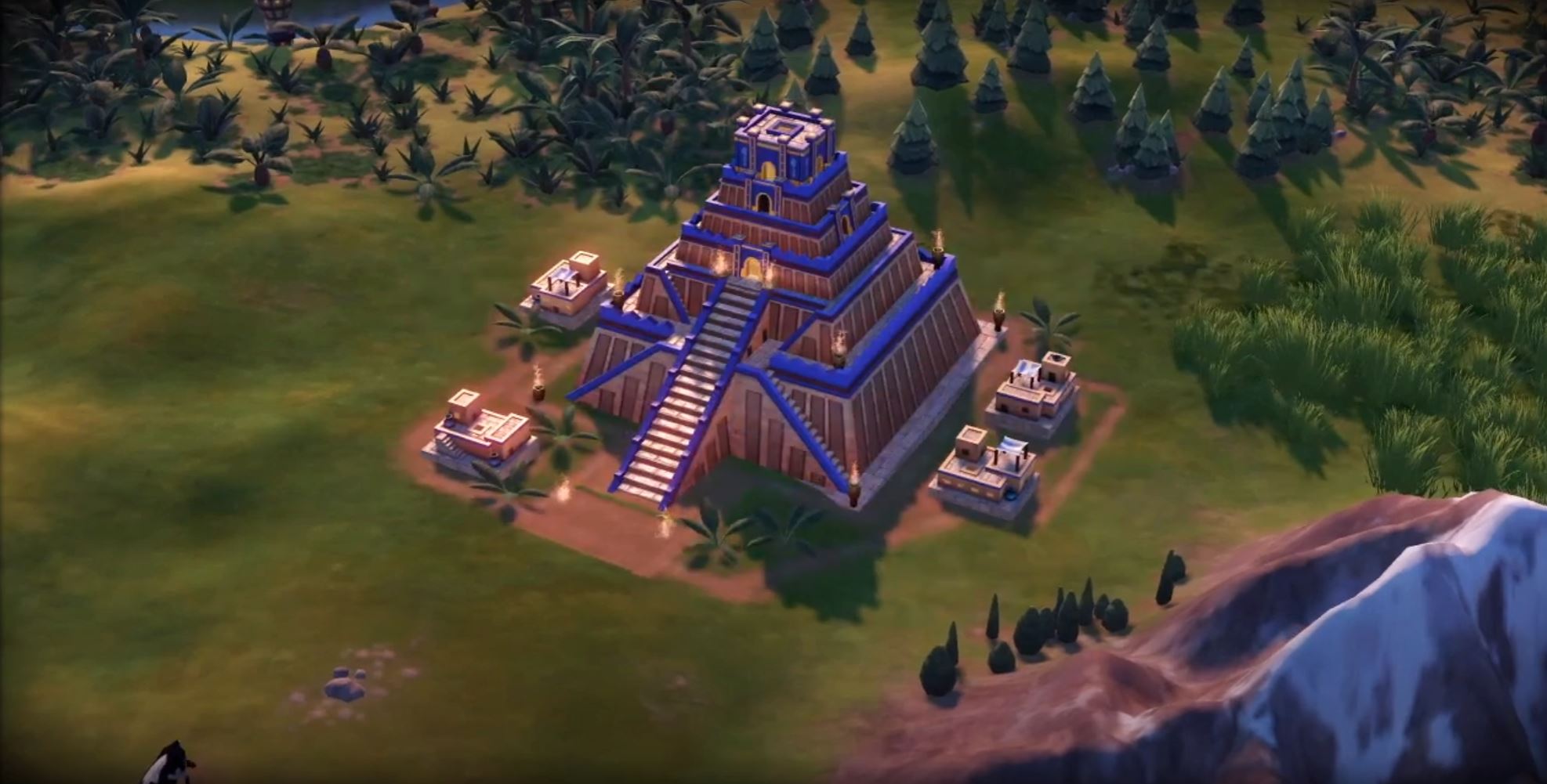The Wonders of Civilisation VI
West Asia has long been a cradle of civilisations, and this is no different in Firaxis’ game Civilization VI. The game offers a detailed look at the wonders of the region, and how they compare to their real-world counterparts. In particular, the wonders of West Asia provide many opportunities for players to explore the historical context. An Archaeogaming perspective.
The Hanging Gardens

One of the most recognisable wonders in Civilization VI is the Hanging Gardens of Babylon. A beautiful and grandiose structure, with lush gardens, fountains and elaborate columns represents the wonder in-game. It was supposedly built either by Queen Semiramis or King Nebuchadnezzar II. Also, it was one of the Seven Wonders of the Ancient World. In the game, the Hanging Gardens provide Culture and Faith bonuses, as well as additional science when built adjacent to a river.
The localisation of the Hanging Gardens in Babylon goes back to classical authors, but newer research suggest, that they might have been in Nineveh instead and built by Sennacherib. Be that as it may, the Hanging Gardens were never really found and the visualisation is based solely on the interpretations by various artists. If you look closely, its colouring reminds of another wonder.
The Etemenanki
The Etemenanki is another recognisable wonder in Civilization VI. It represents the Tower of Babel in the Old Testament, which – according to the Bible – was an attempt by humans to reach the heavens. In the game, a large and impressive edifice with a temple at the top represents the wonder. It provides bonuses to Culture and Science, as well as additional Culture and Science when built adjacent to a river.
The visualisation of Etemenanki in Civilization VI is based on archaeological evidence, as well as the interpretations of various artists. Especially the 3D visualisation of Byzantium1200 comes to mind, due to the specific colouring of the temple and crenellations. There are better reconstructions available, for example by Schmid , but I guess that it did not look as impressive as the colourful interpretation mentioned before.
Conclusions
The wonders of the Near East are an integral part of Civilization VI, and provide a unique way for players to explore the history and culture of the region. By comparing the wonders of the game to their real-world counterparts, players can gain a deeper appreciation for the game’s various cultures and gain a better understanding of the historical context of the Near East.
However, the depiction of the wonders is tailored towards the expectations of the viewers. These are only familiar with movies like Alexander or at the very best remember some pictures of the Ishtar Gate. Also, the attribution of civilisation perks to these monuments paints a picture where only the building of “wonders” lead to progress, something that is a problem by itself and has been already discussed .







